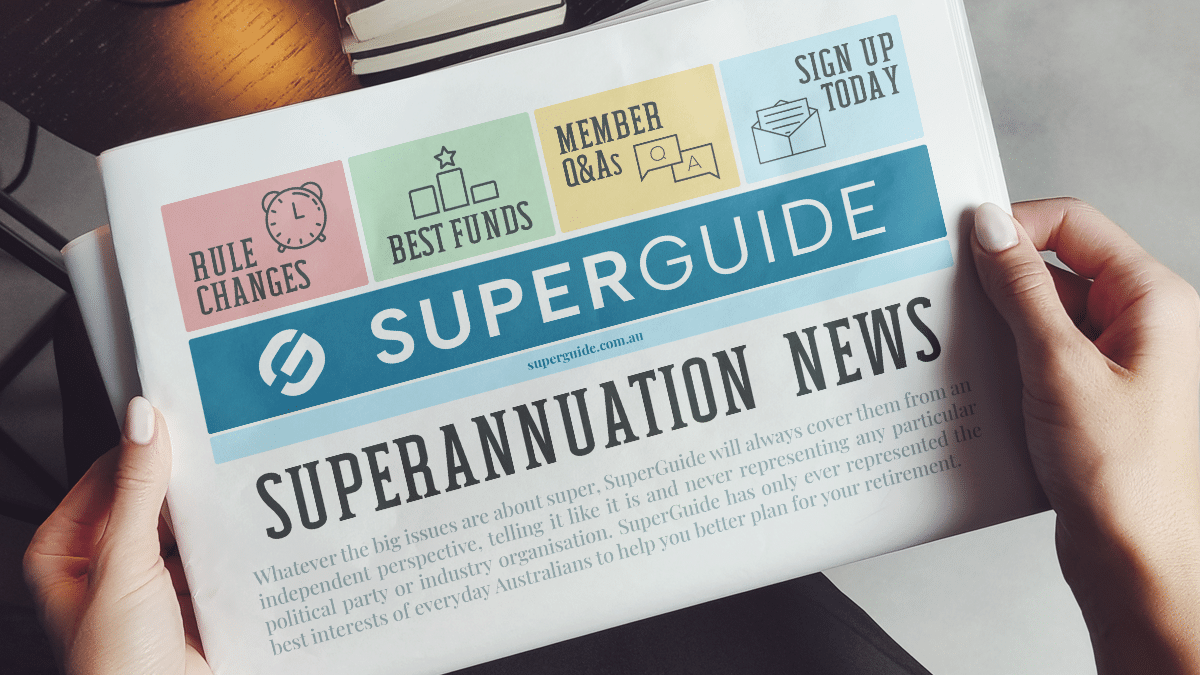In this guide
The latest super news in brief.
APRA to rate super funds using traffic light colours
The Australian Prudential Regulation Authority (APRA) is due to assess super fund performances for the first time later this year using a system of traffic light colours.
The Australian Financial Review reported APRA will rate funds in at least four key areas – net returns, fees and costs, insurance and ‘sustainability’, which will include features such as demographics and inflows versus outflows.
The superannuation fund offerings will be rated red, amber and green. For example, a fund might be rated ‘green’ on net returns but ‘red’ on its insurance policy or fees.
“We will report metrics relative to a number of both absolute and relative benchmarks,” APRA deputy chair Helen Rowell told a parliamentary inquiry on Friday, August 9, “And the way we will present the information will make very clear the performance of individual entities relative to those benchmarks.”
ATO cracking down on SMSFs meeting diversification requirements
The Australian Tax Office is concerned that some self-managed super fund trustees are not adequately diversifying their fund’s investments, putting fund assets at risk.
Next month the ATO plans to contact almost 17,700 SMSF trustees and their auditors where records indicate the SMSF may be holding 90% or more of its funds in one asset, or one asset class.
Lack of investment diversification could expose a SMSF and its members to unnecessary risk if one major investment fails. Trustees will need to review their investment strategies to ensure it complies with regulations.
More Aussies working longer
The age at which Australians intend to retire is edging higher. Ten years ago, almost 9% of Australians aged 65 and older were employed. Now, the Australian Bureau of Statistics (ABS) reports that figure increased to around 13% in 2016-17.
“There are many reasons why Australian workers are remaining in the workforce for longer,” says Melbourne psychologist Gary Rubin, who consults with individuals and couples on how to retire right.
“The cost of living is getting tougher and some people are simply forced to keep earning an income for longer,” says Rubin. “Today, we are living longer than our parents or grandparents did, so our retirement dollars need to last us longer.”
The Association of Superannuation Funds of Australia (ASFA) estimates that an individual would need $545,000 and a couple $640,000 for a ‘comfortable retirement’. The latest Roy Morgan research found that the average gross wealth (total assets not including owner-occupied homes) of intending retirees is $299,000, up only 2 per cent in the past two years.
New research shows super works
Whether or not our superannuation system is delivering for Australian retirees is a hotly debated topic, but a recent survey strongly indicates that it really is working.
The 2019 Ensuring Financial Security in Retirement survey conducted by Challenger Retirement Income Research, showed that self-funded retirees now outnumber pensioners and the number of retirees able to qualify for the Age Pension is likely to decrease even more.
“Super is working on a mass scale, even though it does leave a minority of people behind,” says Challenger’s chair Jeremy Cooper. “Contrary to many opinions, super is reducing reliance on the Age Pension for the large majority of people in retirement. The evidence for this is that the average newly retired Australian is not accessing the Age Pension at all.”
Now with 27 years of compulsory contributions under their belts, the average balance for singles aged between 60 and 64 exceeded $300,000 in 2016-17 on ATO aggregates for super balances. A typical couple starting retirement today is around $400,000 and, depending on inflation, is estimated to be $600,000 in five years’ time.
Key findings:
- In December 2018, 45% of 66-year-olds were accessing the Age Pension with 25% on a full Age Pension.
- There’s now more than $800 billion in super accounts of members aged over $65.
- More than half the Australians retiring today will have enough money to self-fund their retirement.
- In December 2018, 55% of people aged 66 were not eligible for the pension because their income and assets were too high. Additionally, 20% were able to draw a part-Age Pension and 25% received a full Age Pension.
Older Aussies are going back to work – not ready to retire
If you are 65 or older, you’re in the single fastest growing age group securing work in Australia, despite a 39 per cent rise in the number of older Australians who are unemployed.
Latest research into changes in the jobs market shows that while there has been an increase in unemployment for over-65s, there is now a record number of older Aussies in the workforce.
The Australian Bureau of Statistics (ABS) reports a record 610,000 people aged 65 or older now hold down part-time or full-time work. Workplace diversity expert Conrad Liveris believes that early retirees may have discovered they missed working and are looking to re-enter the workforce.
“The 65-plus age group is caught between a transition to a new retirement system, a changing labour market and an economy that still values their skills,” says Liveris. “Also, they’re not dying. Their health is pretty damn good. They are not going anywhere.”
The ABS research also shows that older Australians are taking on more than one job. Between 2011-12 and 2016-17, the number of workers aged over 60 holding down two jobs or more grew by 18% – 4% more than the national average.

Leave a comment
You must be a SuperGuide member and logged in to add a comment or question.